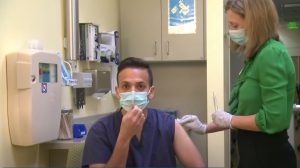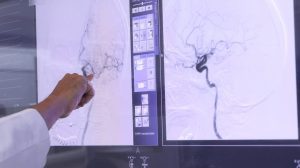NEW YORK (Reuters Health) – In young children with acute viral gastroenteritis, rapid nasogastric rehydration (RNR) over four hours in the emergency department is as safe and effective as standard nasogastric rehydration (SNR) over 24 hours, according to results of a randomized clinical trial conducted in Australia.
“RNR should be considered as an alternative to SNR for children 6 to 72 months of age with moderate dehydration attributable to viral gastroenteritis,” the authors conclude.
However, they say close follow-up monitoring after discharge from the emergency department is “mandatory to detect ongoing gastrointestinal losses or worsening dehydration.”
Dr. Ralf Heine from the Department of Gastroenterology and Clinical Nutrition, Royal Children’s Hospital, Melbourne and colleagues report their study in the October issue of Pediatrics, available online now.
Dr. Stephen Freedman, of the Divisions of Paediatric Emergency Medicine and Gastroenterology, Hepatology and Nutrition, at the Hospital for Sick Children, in Toronto, Ontario, Canada, who was not involved in the study, said it provides “further evidence that the use of nasogastric rehydration can be successfully employed in children with dehydration.”
Dr. Heine and colleagues compared the efficacy of two nasogastric rehydration regimens in 228 children with acute viral gastroenteritis and moderate dehydration who were seen in two emergency departments in Melbourne; 109 were managed with SNR in the hospital ward and 119 with RNR in the emergency department. Baseline characteristics were similar in both groups.
All 228 children were treated successfully and made a full recovery, regardless of rehydration strategy employed. No serious adverse events occurred in the study.
Rates of primary treatment failure – defined as an additional loss of > 2% fluid at any time during the rehydration process – were similar (P = 0.52) for RNR and SNR (11.8% and 9.2%, respectively).
Rates of secondary treatment failure were more common (P = 0.03) in the SNR group (44%) than in the RNR group (30.3%). The researchers defined secondary treatment failure as an inability to tolerate the insertion of a nasogastric tube, frequent or persistent vomiting, need for IV rehydration, continued signs of moderate dehydration, need for nasogastric fluids beyond 24 hours or impending circulatory collapse.
Dr. Freedman noted that the study had “a high overall failure rate in both study arms, which in fact likely supports the use of intravenous rehydration. What the study does show, is that if you do use nasogastric rehydration, a rapid rehydration is likely a reasonable first line of therapy.”
However, the reduced need for immediate hospitalization, he said, “needs to be balanced” with the fact that 27 patients (22.7%) were not suitable for discharge after the initial rehydration phase and 9 (7.6%) were readmitted to the hospital at 24 hours because of clinical signs of dehydration or persistent vomiting.
Reference:
Pediatrics 2011;128:e771-e778.




